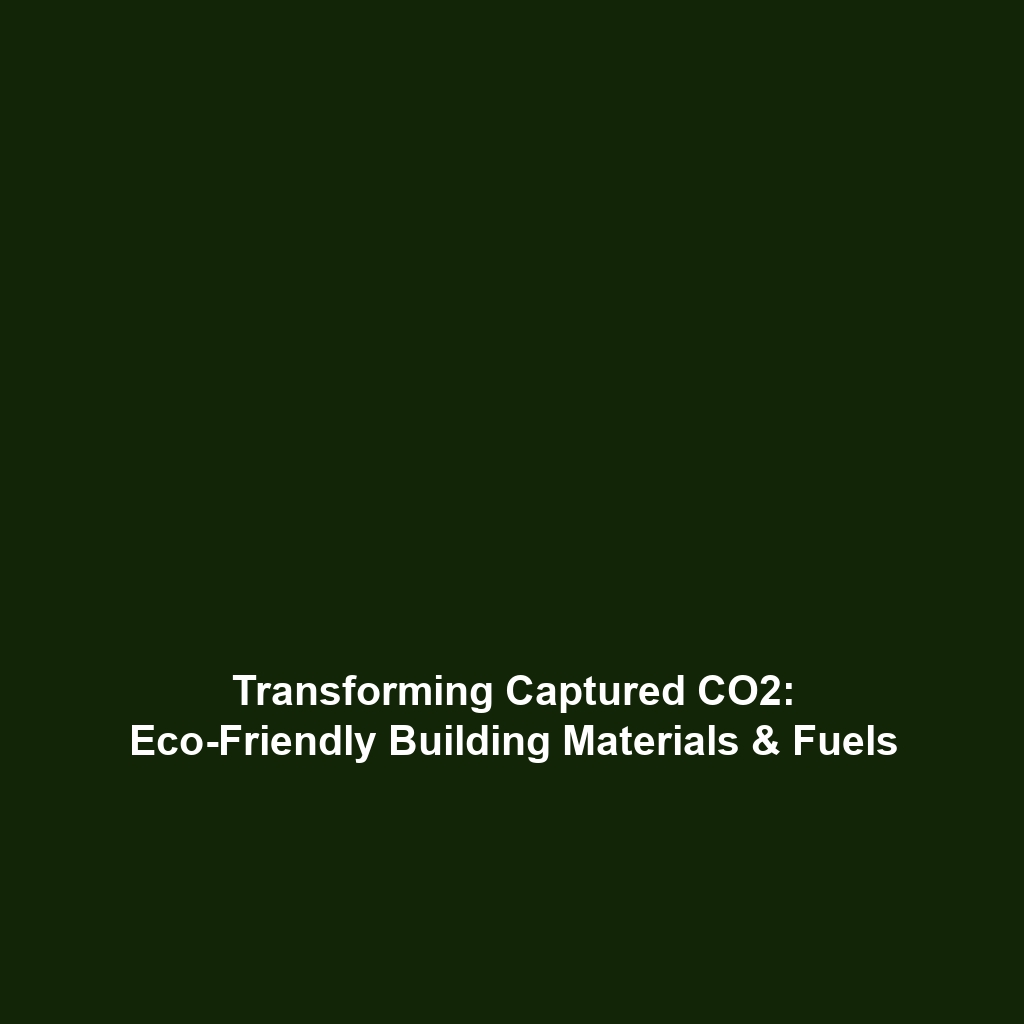CO2 Capture from Natural Gas Production: An Overview of Carbon Capture & Storage (CCS)
Introduction
Carbon Capture & Storage (CCS) plays a pivotal role in mitigating climate change by reducing carbon dioxide (CO2) emissions. A significant method within this category involves capturing CO2 produced during natural gas extraction and injecting it into deep underground geological formations. This process not only helps to combat global warming but also allows for the sustainable use of natural gas, which is a cleaner fossil fuel compared to coal and oil. Understanding the mechanics of this technology is crucial in the broader context of developing effective climate solutions.
Key Concepts
Understanding CO2 Capture
The process of capturing CO2 from natural gas production involves several steps:
- Extraction: During the drilling of natural gas wells, CO2 is often released alongside methane.
- Separation: Advanced technologies are employed to isolate CO2 from the gas mixture.
- Compression: The captured CO2 is compressed to facilitate transportation.
- Injection: Finally, the compressed CO2 is injected into geological formations, typically at depths greater than 800 meters, where it is permanently stored.
This method is integral to the CCS strategy, which focuses on minimizing atmospheric CO2 levels while transitioning to sustainable energy practices.
Applications and Real-World Uses
How CO2 Capture is Used in CCS
Several significant applications of CO2 capture from natural gas production exist, demonstrating the technology’s versatility:
- Enhanced Oil Recovery (EOR): Injecting CO2 into oil reservoirs can increase yield, simultaneously storing carbon and improving oil extraction efficiencies.
- Geological Storage: Deep saline formations represent a long-term solution for CO2 storage, effectively reducing its contribution to atmospheric levels.
- Natural Gas Processing: Using CO2 capture technologies enhances the purity of natural gas, making it more competitive in energy markets.
These applications underline the importance of CO2 capture systems within the broader CCS framework.
Current Challenges
Challenges of CO2 Capture from Natural Gas Production
While the potential for CO2 capture is substantial, several challenges persist in its implementation:
- Cost: The financial burden of implementing CCS technologies, particularly at scale, can be prohibitive.
- Infrastructure: Insufficient infrastructure for transportation and storage can limit the extensive deployment of captured CO2.
- Public Perception: Skepticism surrounding the safety and efficacy of underground storage impacts regulatory frameworks.
- Regulatory Barriers: Navigating complex regulations can hinder project development and expansion.
These issues highlight the necessity for ongoing research and dialogue to address and mitigate barriers associated with CCS.
Future Research and Innovations
Innovations in CO2 Capture and Storage
Research is underway to refine CO2 capture methods and make them more efficient:
- Direct Air Capture (DAC): Emerging technologies aim to capture CO2 directly from the atmosphere, complementing sources from natural gas production.
- Advanced Materials: The use of novel materials for more efficient separation processes is a focal point of research.
- AI and Machine Learning: Predictive analytics can optimize the monitoring of storage sites, ensuring the secure containment of injected CO2 over time.
Such innovations could significantly enhance the effectiveness of CCS strategies in the fight against climate change.
Conclusion
The capture of CO2 from natural gas production and its subsequent injection into deep underground geological formations represent a critical advancement in the broader context of Carbon Capture & Storage (CCS). Despite existing challenges, ongoing innovations and practical applications underscore the importance of this approach in reducing greenhouse gas emissions. For further information on CCS technologies, please explore our CCS techniques overview and stay informed about other relevant advancements in environmental technology.


